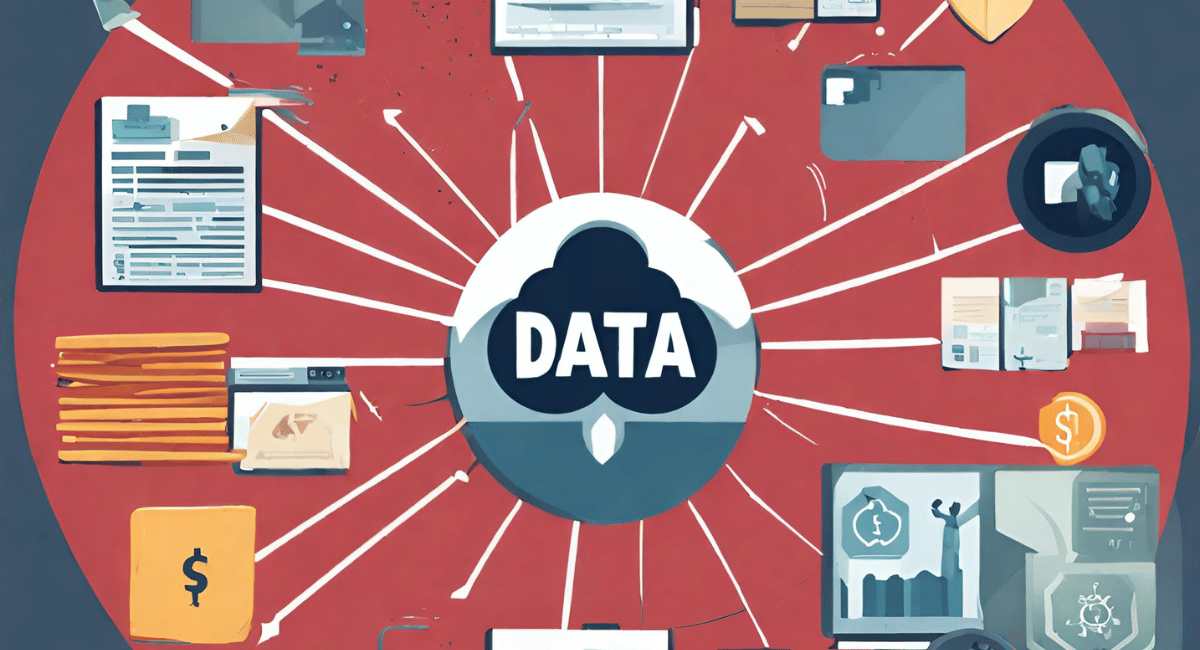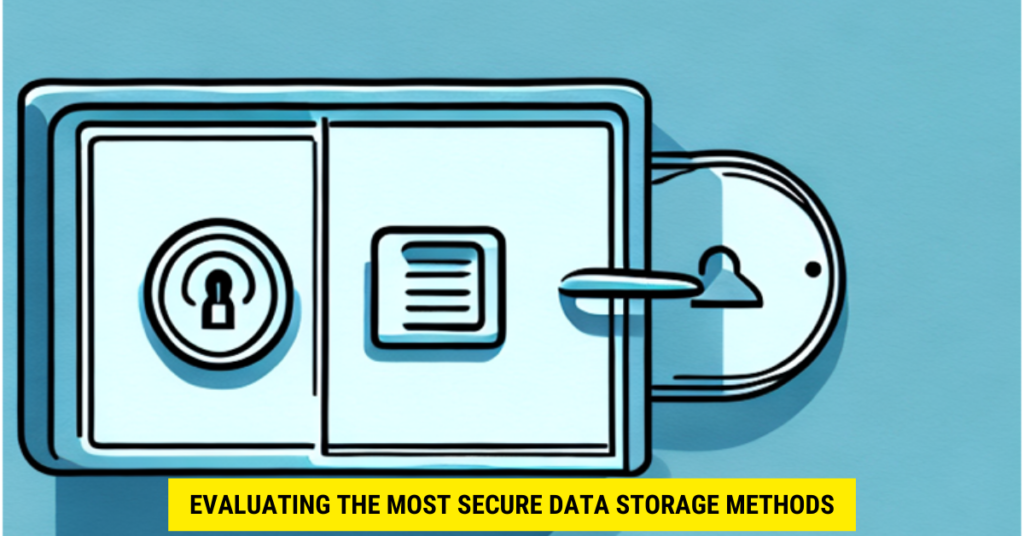The Most secure way to prevent unauthorized access to your data is to use an end-to-end encrypted solution. With end-to-end encryption, only the sender and the recipient can access the encryption key, making it extremely difficult for anyone, including hackers or unauthorized individuals, to decrypt and view the data. When using end-to-end encryption, choosing a trusted and reputable solution that implements strong encryption algorithms is important. When using end-to-end encryption, choosing a trusted and reputable solution that implements strong encryption algorithms is important.
In today’s digital age, data security is of utmost importance. With the ever-increasing threat of cyber-attacks and data breaches, individuals and organizations must protect their valuable information. But what is the most secure way to store data? I will explore the different data storage methods and evaluate their security measures. We will also discuss best practices for secure data storage.
Understanding the Importance of Data Security
Data security is protecting data from unauthorized access, disclosure, or destruction. It involves implementing various measures to ensure that sensitive information remains confidential and available only to authorized individuals. The rising threat of cyber attacks has highlighted the critical importance of data security in both personal and professional contexts.
Data security is not just a buzzword but a crucial aspect of our increasingly digital world. With the rapid advancement of technology, the amount of data generated and stored has skyrocketed. From personal information such as social security numbers and credit card details to sensitive corporate data like intellectual property and trade secrets, safeguarding this information has never been more pressing.
The Rising Threat of Cyber Attacks

In recent years, cyber attacks have become increasingly sophisticated and prevalent. Hackers and malicious actors constantly find new ways to infiltrate networks and compromise sensitive data. From phishing scams to ransomware attacks, no one is immune to the dangers of cybercrime.
With the rise of the Internet of Things (IoT), our homes, cars, and medical devices are connected to the Internet, creating more entry points for cybercriminals. This interconnectedness has further increased the potential attack surface, making data security an even more critical concern.
The Cost of Data Breaches

Aside from the obvious security risks, data breaches can also have severe financial consequences for individuals and organizations. The costs associated with a data breach can include legal fees, regulatory fines, reputational damage, and customer compensation. Therefore, it is crucial to implement robust data storage methods to minimize the risk of a breach.
Furthermore, the impact of a data breach goes beyond immediate financial losses. It can lead to losing customer trust and loyalty, which can be challenging. Customers are increasingly concerned about how their personal information is being handled, and a single data breach can erode years of hard-earned reputation.
Moreover, the legal and regulatory landscape surrounding data security is constantly evolving. Organizations must navigate a complex web of laws and regulations, such as the General Data Protection Regulation (GDPR) and the California Consumer Privacy Act (CCPA), to ensure compliance and avoid hefty penalties.
Investing in data security measures is not just a reactive approach but a proactive one. By prioritizing data security, organizations can demonstrate their commitment to protecting customer information, gain a competitive advantage, and build a strong foundation for future growth.
Different Methods of Data Storage
There are various data storage methods, each with its advantages and disadvantages. Understanding these methods can help individuals and organizations make informed decisions about how they store their data.
Physical Data Storage
Physical data storage refers to storing data on physical devices such as hard drives, solid-state drives (SSDs), or tapes. This method has been prevalent for decades and offers the advantage of having complete control over the physical location of the data.
Hard drives have been the go-to choice for physical data storage for many. These devices consist of spinning platters coated with a magnetic material, with a read/write head that moves across the surface to access data. Hard drives come in various sizes and capacities, ranging from a few gigabytes to several terabytes.
On the other hand, SSDs have gained popularity in recent years due to their faster read/write speeds and lower power consumption. Unlike hard drives, SSDs store data with flash memory, allowing quicker access times and more reliable performance.
While physical storage devices offer direct control over data, they can also be prone to failures, theft, or damage. Data recovery can be a challenging and expensive process in the event of a hardware failure. Additionally, physical storage devices require regular maintenance and backups to ensure data integrity.
Cloud Storage
Cloud storage has gained a reputation recently due to its convenience and accessibility. It involves storing data on remote servers managed by a third-party provider. Cloud storage offers benefits such as scalability, automatic backups, and remote access to data.
One of the key advantages of cloud storage is its scalability. Cloud providers, individuals, and organizations can easily increase or decrease their storage capacity based on their needs. This flexibility eliminates the need for investing in additional hardware or dealing with the limitations of physical storage devices.
Cloud storage also provides automatic backups, ensuring data is safely replicated and protected against hardware failures or disasters. This feature eliminates the need for manual backups and reduces the risk of data loss.
Furthermore, cloud storage enables remote access to data from any device with an internet connection. This accessibility allows individuals and organizations to access their data from anywhere, facilitating collaboration and remote work.
However, data security and privacy concerns have arisen with the increasing reliance on cloud storage. Storing data on remote servers means individuals and organizations entrust their sensitive information to third-party providers. While reputable cloud providers implement robust security measures, there is always a risk of unauthorized access or data breaches.
Hybrid Data Storage
Hybrid data storage combines the advantages of both physical and cloud storage. It involves storing data both locally and on the cloud. This approach provides the flexibility to leverage the benefits of cloud storage while maintaining control over sensitive data.
With hybrid data storage, individuals and organizations can choose which data to store locally and which to store on the cloud. Sensitive or confidential data can be kept on local storage devices, ensuring direct control and minimizing the risk of unauthorized access. At the same time, non-sensitive data can be stored on the cloud, taking advantage of the scalability and accessibility that cloud storage offers.
However, implementing hybrid data storage introduces additional complexities in managing data across different storage platforms. It requires efficient data synchronization and backup strategies to ensure data consistency and minimize the risk of data loss. Additionally, organizations must carefully consider the costs of maintaining both local storage devices and cloud storage subscriptions.
In conclusion, the choice of data storage method depends on various factors such as data sensitivity, accessibility requirements, scalability needs, and budget constraints. Understanding the advantages and disadvantages of physical, cloud, and hybrid storage can help individuals and organizations make informed decisions to ensure the security, accessibility, and availability of their data.
Evaluating the Most Secure Data Storage Methods

Several factors need to be considered when considering the security of different data storage methods. Let’s examine the security measures implemented in each method.
Security Measures in Physical Data Storage
Physical data storage can be made more secure by implementing encryption, access controls, and regular backups. Encryption ensures that the data remains unreadable without the encryption key, even if the physical device is compromised. Access controls restrict unauthorized access to the physical storage devices, while regular backups provide redundancy in case of data loss.
In addition to encryption, access controls, and backups, physical data storage can benefit from implementing physical security measures. These measures include surveillance cameras, alarms, and restricted access to the storage facility. By combining these physical security measures with the previously mentioned digital security measures, the overall security of physical data storage is significantly enhanced.
How Secure is Cloud Storage?
Cloud storage providers take extensive security measures to protect their users’ data. These measures include encryption, firewalls, access controls, and regular security audits. Encryption ensures that data stored in the cloud remains secure even if unauthorized individuals gain access to the cloud infrastructure. Firewalls are a barrier between the cloud storage system and external networks, preventing unauthorized access and potential attacks.
In addition to encryption and firewalls, access controls are crucial in securing cloud storage. Cloud storage providers implement robust access control mechanisms to ensure only authorized individuals can access and modify the stored data. These controls can include multi-factor authentication, role-based access control, and strong password policies.
Cloud storage providers conduct regular security audits to identify and address any vulnerabilities in their systems. These audits help ensure that the security measures implemented are up-to-date and effective in protecting users’ data. However, concerns remain about data security in transit and the potential vulnerabilities the shared cloud storage infrastructure introduced.
The Safety of Hybrid Data Storage
Hybrid data storage offers a balance between security and convenience. By leveraging encryption and access controls both locally and in the cloud, individuals and organizations can ensure the safety of their data. Locally stored data can be encrypted and protected by access controls, while cloud storage can provide additional redundancy and accessibility.
However, proper data management and monitoring across different platforms are essential to maintain security. Organizations must establish clear policies and procedures for data transfer between local and cloud storage, ensuring that sensitive information is protected. Regular monitoring and auditing of local and cloud storage environments can help identify potential security breaches or vulnerabilities.
In conclusion, evaluating the security of different data storage methods requires understanding the various security measures implemented in each method. Physical data storage can benefit from digital and physical security measures, while cloud storage relies on encryption, access controls, and regular security audits. Hybrid data storage balances security and convenience, but proper management and monitoring are crucial for maintaining data security.
Best Practices for Secure Data Storage
Regardless of the chosen method of data storage, certain best practices can enhance security.
Regular Data Backups
Regularly backing up data is crucial to ensure data can be recovered in case of a breach, hardware failure, or natural disaster. Automating the backup process and storing the backups in multiple locations or on different storage platforms is recommended for added redundancy.
Encryption and Password Protection
Implementing encryption and password protection adds a layer of security to stored data. Encryption ensures that even if the data is accessed, it remains unreadable without the encryption key. Strong passwords should be used to prevent unauthorized access to data storage devices or cloud accounts.
Regular Software Updates
Keeping all software and firmware regularly up to date is crucial to protect against known vulnerabilities. Security patches are regularly released by software and hardware vendors, addressing any discovered weaknesses. Regularly applying these updates helps ensure that data storage methods remain secure.
Key Points and Important Notes
- Data security is crucial in the digital age, protecting data from unauthorized access, disclosure, or destruction.
- Cyber attacks are on the rise, necessitating robust data security measures.
- Data breaches can have severe financial and reputational consequences.
- Different data storage methods include physical, cloud, and hybrid storage.
- Evaluating the security of each storage method involves understanding encryption, access controls, and other security measures.
- Best practices for secure data storage include regular backups, encryption, password protection, and software updates.
- Cloud storage offers convenience and scalability, while physical storage provides control and direct access.
- Hybrid storage combines the benefits of physical and cloud storage.
FAQs
Q: Is it necessary to use cloud storage for secure data storage?
A: While cloud storage offers several advantages, it is not the only secure option for storing data. Cloud storage security depends on the provider’s infrastructure and the implementation of encryption and access controls. On-premises storage solutions can be secure if proper encryption and backup mechanisms exist.
Q: How often should I update encryption algorithms to ensure data security?
A: As technology advances, encryption algorithms can become vulnerable to new attack methods. It is recommended to stay updated with the latest encryption standards and periodically review and upgrade the encryption algorithms used for data storage. Following industry best practices and consulting with security experts can help ensure data remains secure.
Q: Can I take any additional measures to enhance data security?
A: Absolutely. In addition to the core elements mentioned earlier, you can consider implementing intrusion detection systems, firewalls, and regular security assessments. It is also important to stay informed about emerging security threats and update all software and systems with the latest security patches.
Conclusion
In conclusion, determining the most secure way to store data requires careful consideration of various factors. While there is no one-size-fits-all solution, understanding the security measures in different storage methods and implementing best practices can significantly enhance data security. By proactively protecting their data, individuals, and organizations can mitigate the risks of cyber-attacks and data breaches.
